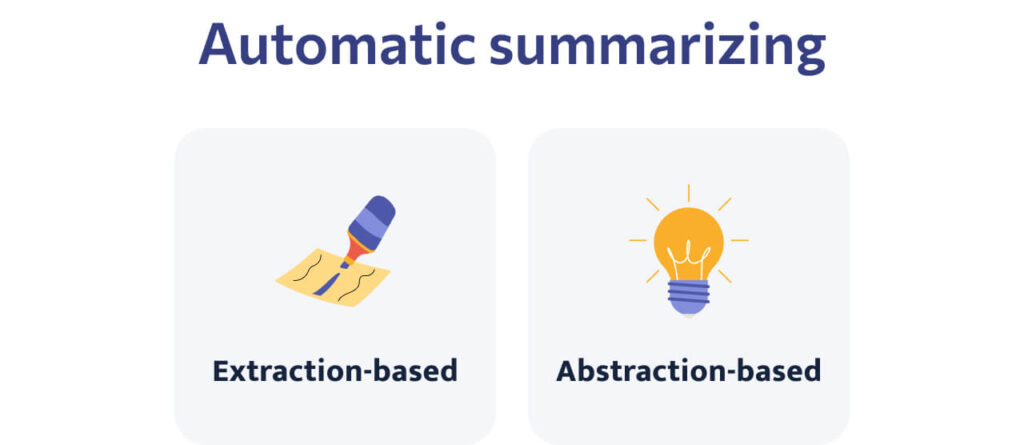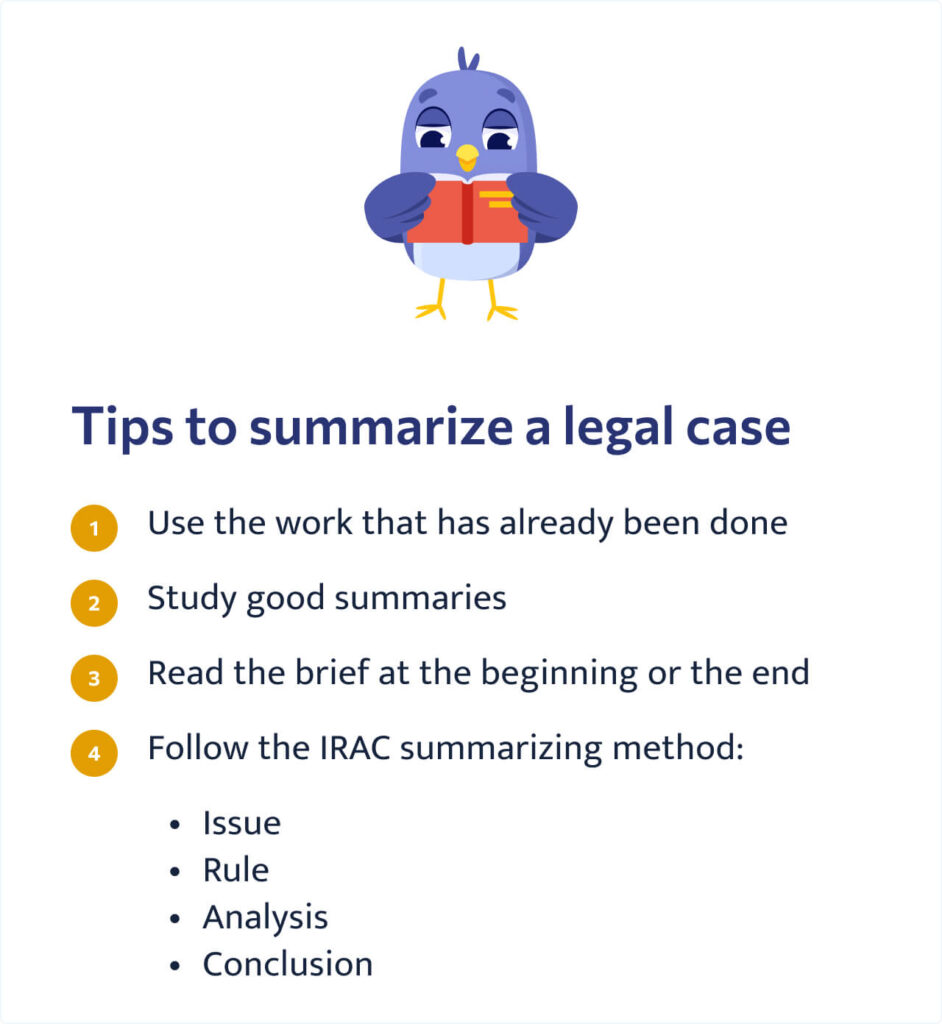🎓 Summarize Bot: How to Use
Take the steps below to get a well-made summary of any text:
- Open the document you need to summarize.
- Highlight the required passage and press Ctrl+C or “Copy.”
- Make sure the section is not more than 15,000 characters.
- Go to Summarize Bot.
- Click somewhere in the left blank field and press Ctrl+V or “Paste.”
- Select the preferred number of sentences.
- Click “Summarize.” Your summary is on the right.
🤖 How Do Automatic Text Summarizers Work?
A future lawyer or attorney is supposed to read numerous thick volumes of text. These are textbooks, law codes, legal cases, and past court proceedings. Gladly, there is a summarize free site to shorten the reading time considerably.

Automatic summarizers are usually based either on extraction-based or abstraction-based algorithm. Both have their benefits and drawbacks. Let’s look at each of the methods in detail.
Extraction-Based Summarizing
This approach is more straightforward.
It highlights the key fragments and combines them to obtain shorter texts (“extracting” the central message).
Such an algorithm is preferred by summarizing bots, as it provides the most stable results.
An extraction-based summarizing tool won’t add anything from itself. On the other hand, it has its drawbacks, including grammatical issues. Be sure to check the result if you wish to use it in your text.
Abstraction-Based Summarizing
This algorithm is more sophisticated. It does not only use text fragments.
Instead, it interprets the meaning to generate a shorter text.
Thus, abstraction-based summarize free sites are not restricted to rearranging passages but function more human-like. They take advantage of the recent developments in machine learning, and each new summary improves the technology.
Still, one cannot tell if this is the best summary generator since it is still far from human-level fluency. The approach is rarely applied due to the expensive development and inconsistent and unpredictable results.
Summarizing Examples
Let’s take a look at the summary examples made using the two techniques.
The source sample is taken from the legal case Donoghue v Stevenson 1932:
My Lords, the facts of this case are simple. On August 26, 1928, the appellant drank a bottle of ginger-beer, manufactured by the respondent, which a friend had bought from a retailer and given to her. The bottle contained the decomposed remains of a snail which were not, and could not be, detected until the greater part of the contents of the bottle had been consumed. As a result she alleged, and at this stage her allegations must be accepted as true, that she suffered from shock and severe gastro-enteritis. She accordingly instituted the proceedings against the manufacturer which have given rise to this appeal.
👨⚖️ Tips to Summarize a Legal Case
A legal case is a written account of a dispute between opposing parties that can be resolved legally. Based on civil or criminal law, it comprises an accuser and a defendant.
Below are the elements of a legal case. The first three of them make up the essence of any claim, while the two next are optional.
You must read and summarize legal cases in any law education and practice.

Here’re several tips for summarizing legal cases faster and easier:
- Use the work that has already been done. Summaries of well-known cases are available on multiple websites. Why not use them as a starting point for your own one? Still, use them for reference only and try to make your summary. Because otherwise, you won’t learn how to do that.
- Study good summaries. Proceeding with the previous advice, reading good case summaries will teach you how this task should be done.
- Read the brief at the beginning or the end. There you quickly find out what it is about.
- Follow the tried-and-true IRAC summarizing method. It is similar to the plan mentioned above but is more practical as it will prevent you from going into unnecessary detail:
- Issue
- Rule
- Analysis
- Conclusion
Case Summary Example
Thank you for reading this article!
If you need to polish your assignment even more, consider trying our other online tools for students:
❓ Summarize Bot FAQ
❓ What Does Summarize Mean?
To summarize a text means to extract the critical information and rearrange it to obtain a shorter and more readable text. At a deeper level, it encompasses the analysis of the author’s intentions. Therefore, a good summary aims to reproduce the original message in fewer words.
❓ Is There an AI That Summarizes Text?
Two types of AI summarize texts: extractive and abstractive. The former extracts the essential words, skipping the less critical information. The latter approach is more human-like, exploring and interpreting the overall idea in a shorter text.
❓ Can AI Summarize a Book?
Online summarizing websites are typically designed for shorter texts, such as essays or articles. Still, advanced AI technologies allow for outlining an entire book. Mind that the result will be too brief and may miss some critical moments. It is strongly recommended to read the original whenever possible.
❓ How Do You Summarize an Article Without Plagiarizing?
The easiest and fastest way to make an article summary is to use an AI-based summarize bot. Meanwhile, the only legal way to use a summarized article without plagiarizing is to credit the source according to the selected citation style.
Updated:
🔗 References
- How to effectively summarize the work of others – SFU Library
- Summarizing – University of Toronto Writing Advice
- Automatic Summarization – an overview | ScienceDirect Topics
- Quoting, Paraphrasing, and Summarizing – Purdue OWL
- The Art of Note-Taking at Law School: The “Summary” – Medium
- Learn to Read, Write Like a Law School Student – USNews.com

